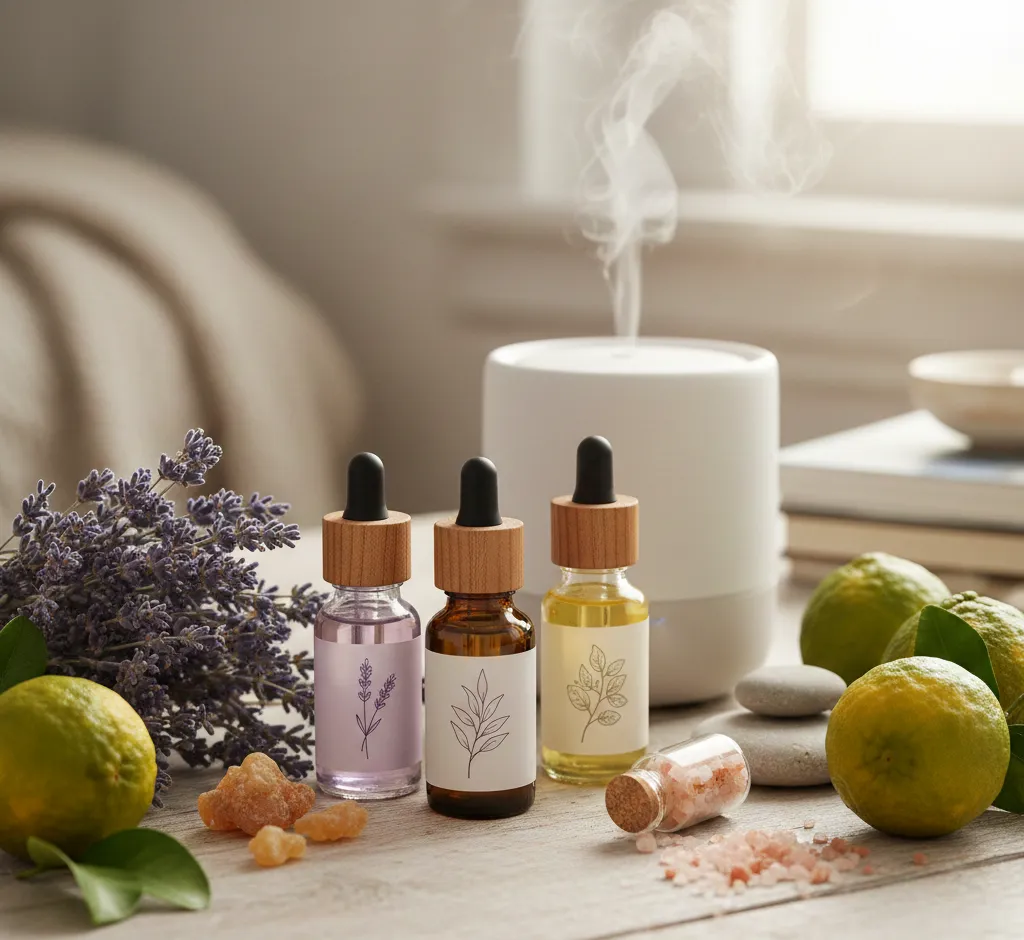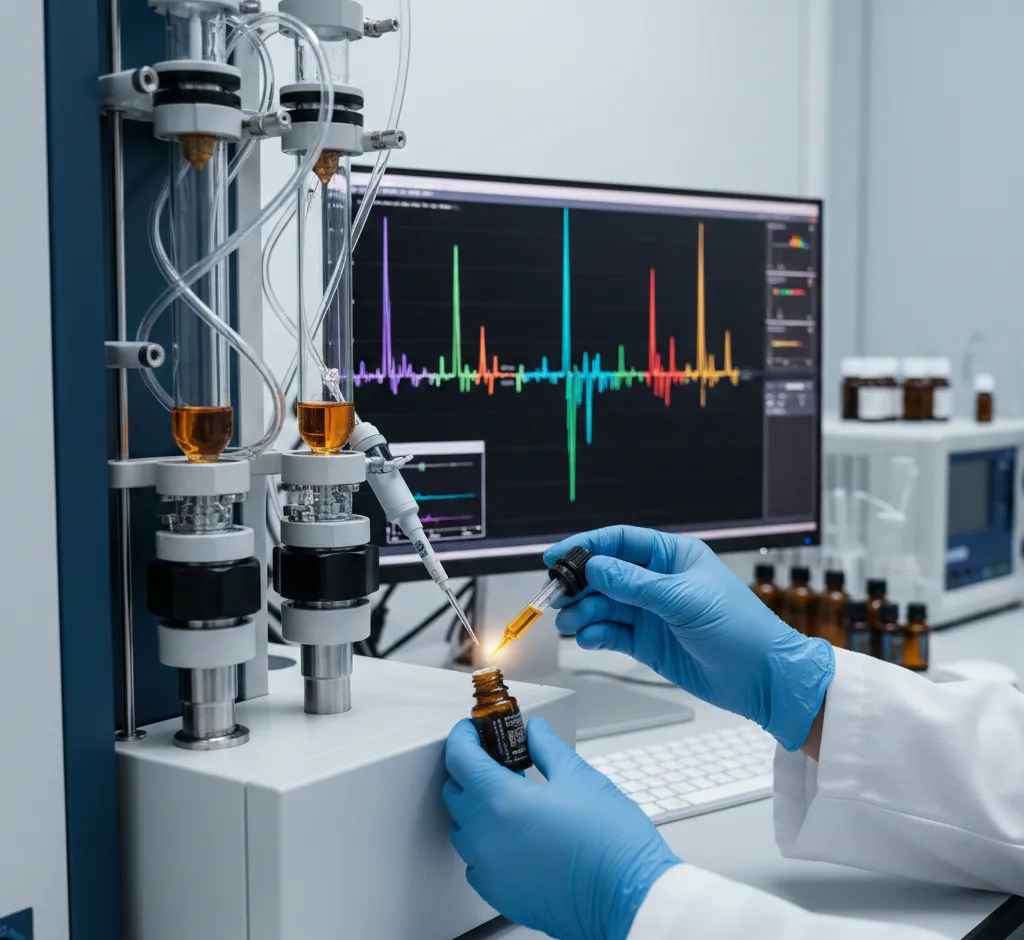The Aromatherapy Gold Standard: A Comprehensive Guide to Choosing Reputable Essential Oil Suppliers
Don't compromise on purity. Learn the 6 non-negotiable standards for choosing reputable essential oil suppliers, including GC/MS testing, ethical sourcing, and what to look for on a Certificate of Analysis (COA).

The Aromatherapy Gold Standard: A Comprehensive Guide to Choosing Reputable Essential Oil Suppliers
In the vast, fragrant world of aromatherapy, essential oils are the core ingredient—the therapeutic, concentrated essence of nature. However, the market is saturated with options, and the distinction between a pure, potent essential oil and a cheap, adulterated substitute can be invisible to the untrained eye. For serious aromatherapy practitioners, natural wellness entrepreneurs, and mindful consumers, the first and most critical step is to partner with **reputable essential oil suppliers**.
Choosing the right supplier is more than a simple purchasing decision; it's a commitment to quality, safety, and therapeutic efficacy. A high-quality oil will deliver the intended health and wellness benefits, while an impure one can be ineffective, or worse, harmful. This in-depth guide will illuminate the crucial factors and rigorous standards you must demand from any supplier before entrusting them with your well-being or business reputation.
The Purity Imperative: Understanding Adulteration and Dilution
The single biggest challenge in the essential oil industry is the prevalence of adulterated and diluted products. Adulteration is the act of adding synthetic chemicals, cheaper natural materials, or other essential oils to an expensive oil to increase volume and profit. For example, Lavender oil might be 'cut' with synthetic linalool or a less therapeutic variety of lavender. Dilution, while sometimes intentional and clearly labeled, often involves adding vegetable carrier oils, alcohol, or even petrochemicals without disclosure.
A truly reputable supplier adheres to one simple rule: 100% pure, unadulterated, and undiluted (unless explicitly and clearly stated as a pre-diluted blend) essential oil.
🔬 Transparency and Testing: The Non-Negotiable Documentation
A supplier’s claims of purity are meaningless without transparent, verifiable, and batch-specific testing data. This is where the concept of 'aromatherapy gold standard' is truly defined. Any trustworthy company will gladly provide the following documents:
- Certificate of Analysis (COA): This document outlines the key chemical components of the oil, confirming that the percentages fall within the expected ranges for the botanical species.
- Safety Data Sheet (SDS): Essential for businesses and practitioners, the SDS provides detailed information on the oil's hazards, handling, storage, and emergency procedures.
- GC/MS Test Results: The cornerstone of essential oil quality control.
The Cornerstone of Quality: GC/MS Testing
Gas Chromatography-Mass Spectrometry (GC/MS) is the most critical tool for verifying an essential oil's purity and chemical composition. The process involves two parts:
- Gas Chromatography (GC): Separates the oil into its individual chemical components (e.g., Linalool, Limonene, Menthol).
- Mass Spectrometry (MS): Identifies each of these individual components by their molecular weight and fragmentation pattern.
When reviewing a supplier's GC/MS report, look for two key characteristics:
- Batch Specificity: The report must correspond to the specific batch number on your bottle. General, outdated, or sample reports are not acceptable.
- Third-Party Analysis: The testing should ideally be conducted by an independent, third-party laboratory. This ensures that the results are unbiased and have no financial tie to the supplier.
🌱 Sourcing Practices: From Seed to Bottle Integrity
The quality of an essential oil is intrinsically linked to the plant's health, its growing environment, and the method of extraction. A superior supplier maintains deep, transparent connections to its source farms and distilleries.
Cultivation and Harvesting Ethics
Ask these crucial questions regarding a supplier's sourcing:
- Botanical Naming: Does the label clearly list the full Latin botanical name (e.g., Lavandula angustifolia, not just “Lavender”)? This prevents confusion between different, chemically distinct plant species.
- Country of Origin: Is the country or region of origin listed? Soil, altitude, and climate (known as 'terroir') dramatically influence an oil's chemical profile.
- Cultivation Method: Is the oil organically grown, wild-harvested, or conventionally farmed? If organic, does the supplier hold a *valid organic certification* (e.g., USDA Organic, Ecocert)?
- Fair Trade and Sustainability: Does the supplier practice ethical sourcing, including fair compensation for farmers and sustainable harvesting to prevent over-collection and protect plant populations?
Extraction and Distillation Expertise
The extraction method affects the oil's final quality. For most oils, **steam distillation** is the standard. For citrus oils, **cold pressing (expression)** is typical. A good supplier will specify the extraction method on the label or in the product description. Inconsistent or improper distillation can damage the oil's delicate therapeutic compounds.
📦 Storage and Packaging Standards
Even the purest essential oil can degrade rapidly if stored incorrectly. Essential oils are volatile and susceptible to light, heat, and air.
- Dark Glass: Essential oils must be stored and sold in **dark amber or blue glass bottles** to block UV light, which accelerates oxidation and degradation. Avoid clear glass entirely.
- Proper Sealing: Bottles should have secure, quality closures to prevent leakage and air exposure.
- Storage Conditions: Reputable suppliers store their bulk oils in climate-controlled environments, often using inert gases (like nitrogen) to blanket the oil and prevent oxygen contact until bottling.
- Best Before Date: While not legally required everywhere, a batch number and a recommended shelf life or distillation date indicate a commitment to freshness and stock rotation.
💰 Evaluating Price: Why Bargains Are a Red Flag
It takes a significant amount of plant material to produce even a small quantity of essential oil. For instance, hundreds of pounds of Rose petals are required for a single ounce of Rose oil. This natural reality dictates a minimum price. When comparing suppliers:
If an essential oil is significantly cheaper than the market average for that species, it is almost certainly a sign of dilution or adulteration.
– The Cost vs. Quality Rule in Aromatherapy
While price should not be the *only* factor, extreme price differences—especially for precious oils like Sandalwood, Rose, or Neroli—should be a massive red flag. Look for competitive, yet realistic, pricing that reflects the true cost of ethically sourced, high-purity botanicals.
💬 Reputation, Experience, and Customer Service
Finally, move beyond the technical documents and evaluate the company itself:
- Industry Longevity and Specialization: Has the company been in the essential oil industry for a long time, and do they specialize in aromatherapy? A long track record suggests consistent quality and reliable sourcing relationships.
- Customer Reviews and Community Feedback: Look for independent reviews (outside the company's website) that specifically praise the oil's aroma, therapeutic effect, and customer service. Seek reviews from experienced aromatherapists, not just casual users.
- Education and Support: Does the supplier provide rich, detailed educational resources? Do they employ certified aromatherapists or experts who can answer complex questions about usage, blending, and safety? A commitment to education is a commitment to the safe and effective use of their products.
- Accessibility of Staff: Can you easily contact a knowledgeable representative? If a company is difficult to reach or unwilling to answer detailed questions about their GC/MS reports or sourcing partners, look elsewhere.
The Final Verdict: A Step-by-Step Vetting Process
To summarize, use this checklist before making your final supplier selection:
- Purity Documentation: Does the supplier offer batch-specific COAs and GC/MS reports (preferably from a third-party lab)?
- Label Clarity: Does the label clearly list the Latin botanical name, country of origin, and extraction method?
- Ethical Sourcing: Do they commit to sustainable, ethical, and/or certified organic practices?
- Proper Packaging: Are the oils stored in dark glass, and is the packaging and storage process secure?
- Realistic Pricing: Is the price comparable to other high-quality brands, avoiding suspicious bargains?
- Reputation Check: Are independent customer reviews positive, and is the company knowledgeable and transparent?
Choosing a reputable essential oil supplier is the single most important decision for anyone serious about aromatherapy. By demanding transparency, verifying documentation, and prioritizing ethical sourcing, you ensure that the oils you use are not only safe but also maximally effective. Your health, and the reputation of your aromatherapy practice, depend on the integrity of your supply chain.


